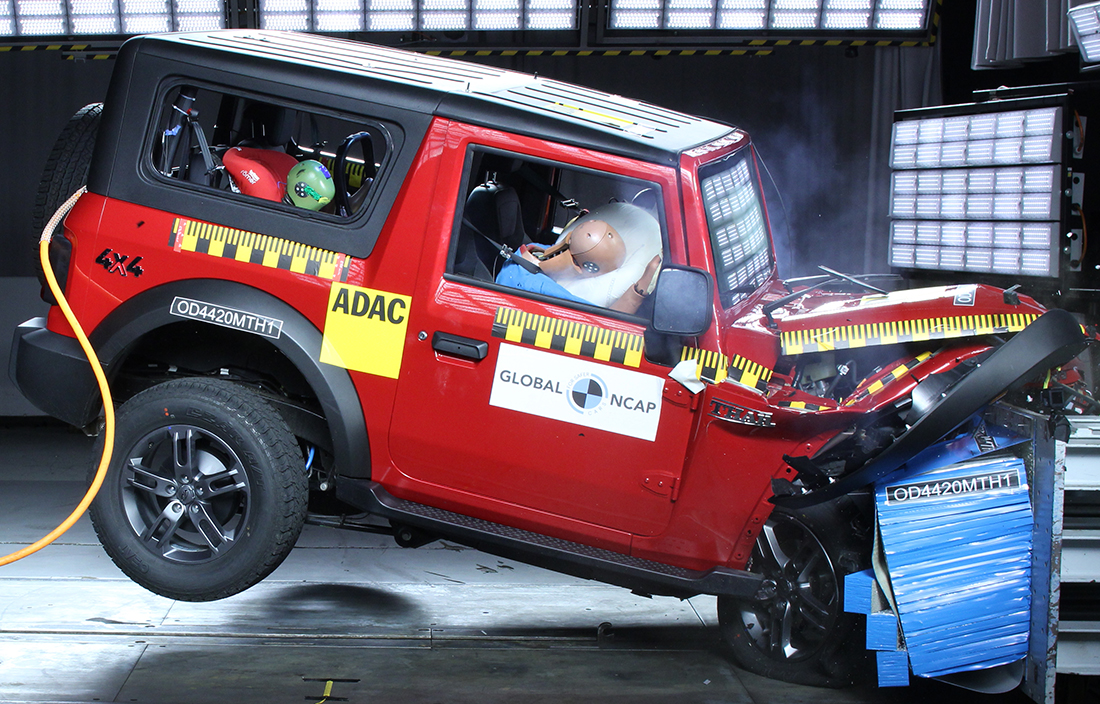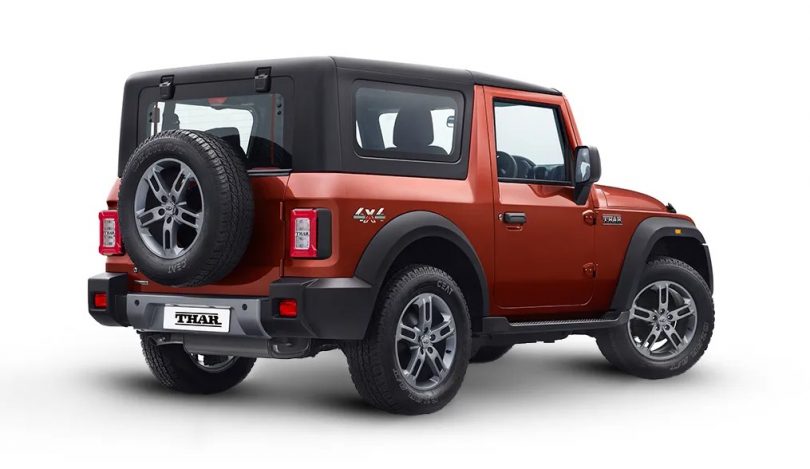Mahindra is already up to its neck in booking for the all-new Thar. The brand has accumulated more than 39,000 bookings on the new Thar since the lifestyle SUVs launch in October 2020. The Thar already has a waiting period of over 10 months in some markets and on certain variants which is now likely to soar further up. The brand is also ramping up its production by more than 50% to cope up with the heavy demand.
Powertrain
The new Mahindra Thar is available in two engine options – a mStallion series 2.0-litre Turbocharged Gasoline Direct Injection (TGDi) four-cylinder DOHC petrol engine that makes 150 Bhp of power and 300 Nm of torque on the Manual transmission and 320 Nm on the Automatic transmission version. Another mHawk series 2.2-litre turbo-diesel engine that produces 130 Bhp of power and 300 Nm of torque. Both engines come with the option of a 6-speed manual transmission and a 6-speed torque converter automatic transmission.
Off-Road Capability
The Mahindra Thar also features 4×4 drivetrain as a standard feature allowing the SUV to traverse unchartered terrain with ease. Even in the standard trim, the Thar comes with a low range transfer case, 41.8-degrees of approach angle, 27-degree of the ramp over angle, 36.8-degree departure angle and a water fording capability of 650mm. The Thar also comes with all-terrain tyres from the factory.
Safety
The Thar is not only adventurous but also safe. The Global NCAP gave the Thar a 4 Star rating for Adult Occupant Protection and another 4 Star rating for Child Occupant Protection. The overall 4 out of 5 Star rating for the SUV of this calibre and segment is commendable. The high safety rating is a result of dual airbags, ABS with EBD, rear parking sensors, ESP (Electronic Stability Program) and a roll cage provided with the SUV as standard.
Other News
Mahindra is working on the new-generation XUV500 and the new Scorpio SUV both of which are currently undergoing validations in the Himalayan region as part of the cold climate and high altitude tests.



